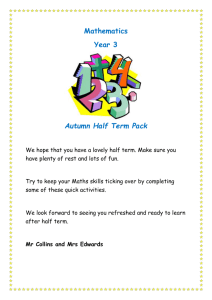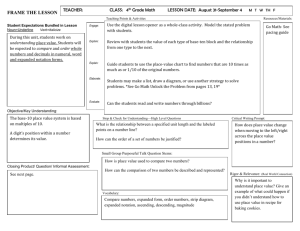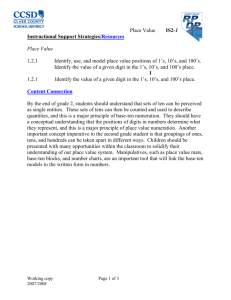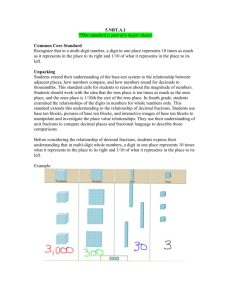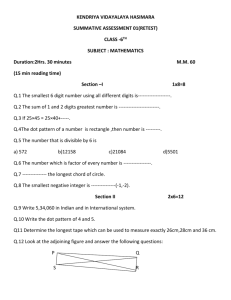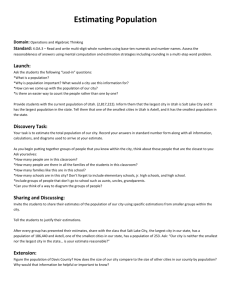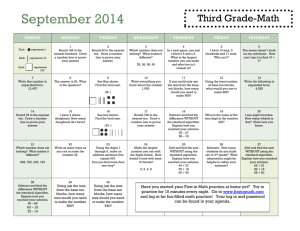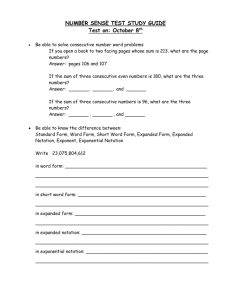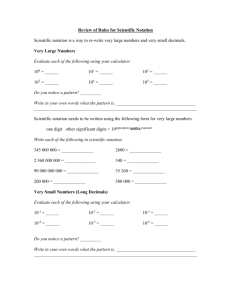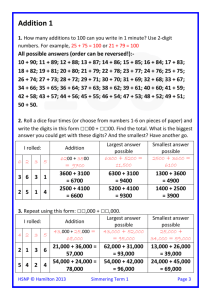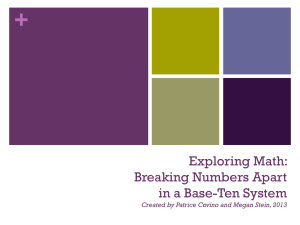Place Value Math Vocabulary
advertisement
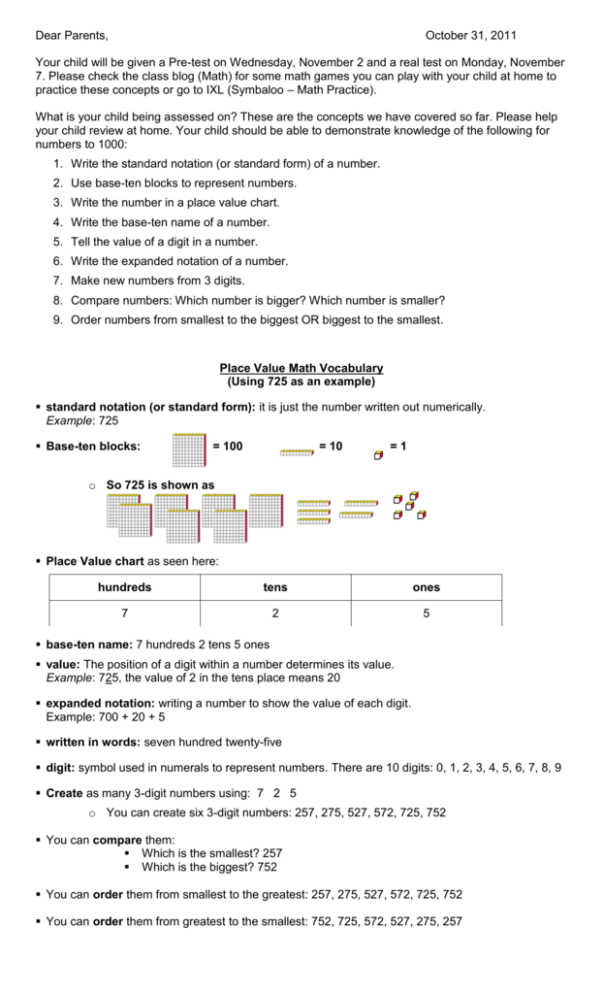
Dear Parents, October 31, 2011 Your child will be given a Pre-test on Wednesday, November 2 and a real test on Monday, November 7. Please check the class blog (Math) for some math games you can play with your child at home to practice these concepts or go to IXL (Symbaloo – Math Practice). What is your child being assessed on? These are the concepts we have covered so far. Please help your child review at home. Your child should be able to demonstrate knowledge of the following for numbers to 1000: 1. Write the standard notation (or standard form) of a number. 2. Use base-ten blocks to represent numbers. 3. Write the number in a place value chart. 4. Write the base-ten name of a number. 5. Tell the value of a digit in a number. 6. Write the expanded notation of a number. 7. Make new numbers from 3 digits. 8. Compare numbers: Which number is bigger? Which number is smaller? 9. Order numbers from smallest to the biggest OR biggest to the smallest. Place Value Math Vocabulary (Using 725 as an example) standard notation (or standard form): it is just the number written out numerically. Example: 725 Base-ten blocks: = 100 = 10 =1 o So 725 is shown as Place Value chart as seen here: hundreds tens ones 7 2 5 base-ten name: 7 hundreds 2 tens 5 ones value: The position of a digit within a number determines its value. Example: 725, the value of 2 in the tens place means 20 expanded notation: writing a number to show the value of each digit. Example: 700 + 20 + 5 written in words: seven hundred twenty-five digit: symbol used in numerals to represent numbers. There are 10 digits: 0, 1, 2, 3, 4, 5, 6, 7, 8, 9 Create as many 3-digit numbers using: 7 2 5 o You can create six 3-digit numbers: 257, 275, 527, 572, 725, 752 You can compare them: Which is the smallest? 257 Which is the biggest? 752 You can order them from smallest to the greatest: 257, 275, 527, 572, 725, 752 You can order them from greatest to the smallest: 752, 725, 572, 527, 275, 257

